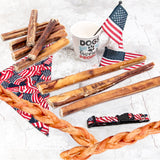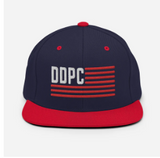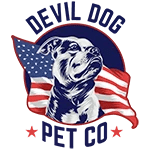Every dog owner faces the same critical decision: which leash will keep your four-legged battle buddy safe, controlled, and happy on every adventure. The best dog leash isn't just about connecting you to your dog—it's your primary communication tool, safety lifeline, and training partner rolled into one essential piece of gear.
Key Takeaways
- The best dog leash is typically a 6-foot leather or high-quality nylon leash with durable hardware.
- A comfortable grip and appropriate thickness are important features for your dog's size.
- This leash length offers optimal control while allowing your dog natural movement during walks.
- A dog leash serves as a communication tool, safety device, and training partner.
- Choosing the right leash is essential for keeping your dog safe, controlled, and happy on adventures.
Table of Contents
- Why Your Leash Choice Matters More Than You Think
- Understanding Different Types of Dog Leashes
- Dog Leash Length and Sizing Guide
- Dog Leash Material Breakdown
- Critical Hardware Specifications
- Matching Leash Size to Dog Requirements
- Specialized Leash Applications
- Extending Leash Life Through Proper Maintenance
- Common Leash Selection Mistakes
- Advanced Leash Selection Strategies
- Emergency Preparedness and Backup Systems
- Leash Investment Analysis
- Making Your Final Leash Decision
Here's the unfiltered truth: most leashes on the market are cheap, poorly designed equipment that'll fail when you need them most. Whether you're managing a 15-pound terrier or a 90-pound power-chewer like our dog Dexter, the wrong leash choice puts both of you at risk.
This guide cuts through the marketing noise to deliver battle-tested recommendations for the top rated dog leashes that actually perform under pressure. We'll cover everything from material science to sizing strategy, so you can make one confident choice instead of burning through multiple failures.
Why Your Leash Choice Matters More Than You Think
Your leash is the most critical piece of safety equipment in your dog gear arsenal. It's not just about compliance with local laws—it's about maintaining control, building communication, and ensuring every outing ends with both of you heading home safely. For more on effective leash laws and public safety, see this canine policy resource.
Leash Failure Consequences:
- Dog escapes into traffic or dangerous situations
- Loss of control during reactive episodes
- Painful rope burns on hands and arms
- Broken hardware leading to emergency vet visits
- Inability to redirect or train effectively
Based on our testing with dozens of leashes across multiple dog sizes and temperaments, the difference between premium and bargain leashes becomes crystal clear within the first week of use. Quality leashes maintain their strength, comfort, and reliability through thousands of walks, while cheap alternatives start failing almost immediately.
Expert Insight: Professional dog trainers report that 80% of leash-related training problems stem from equipment failure or poor ergonomics, not dog behavior issues.
Understanding Different Types of Dog Leashes

Not all leashes are created equal. Each type of dog leashes serves specific purposes, and understanding these differences is crucial for making the right choice for your situation.
Leather Leashes - The Gold Standard
Leather leashes represent the pinnacle of durability and comfort in dog leash materials. Quality leather develops a custom grip over time, becoming more comfortable with each use while maintaining structural integrity for years.
- Durability: Premium leather can withstand 10+ years of daily use
- Comfort: Natural oils prevent rope burn and improve grip
- Weather Resistance: Properly treated leather handles rain and mud
- Strength: Can handle dogs up to 150+ pounds safely
Nylon Leashes - Versatile and Affordable
High-quality nylon leashes offer excellent value for most dog owners, especially when you need multiple leashes or specific features like reflective threading.
- Weight: 40-60% lighter than equivalent leather leashes
- Variety: Available in dozens of colors and patterns
- Maintenance: Machine washable and quick-drying
- Cost: Budget-friendly for multiple leash households
Biothane Leashes - Modern Performance
Biothane combines the best aspects of leather and nylon in a waterproof, odor-resistant package that's gaining popularity among serious dog owners.
- Waterproof: Perfect for beach, lake, and muddy trail adventures
- Easy Cleaning: Rinses clean with plain water
- Durability: Resists chewing, cracking, and UV damage
- Grip: Maintains consistent feel in wet conditions
Rope Leashes - Style Over Substance
While rope leashes offer attractive aesthetics and come in eye-catching colors, they present significant safety and comfort concerns for serious dog walking.
Retractable Leashes - Proceed with Extreme Caution
Retractable leashes remain popular despite significant safety concerns documented by veterinarians and professional trainers.
- Allows dogs more freedom to explore
- Adjustable length for different situations
- Mechanical failure risk increases over time
- Difficult to control strong or reactive dogs
- Thin cord can cause severe injuries
- Bulky handle reduces grip security
Dog Leash Length and Sizing Guide
Choosing the right dog leash length dramatically impacts your control, your dog's comfort, and training effectiveness. Here's how to match length to purpose.
Standard Leash Lengths:
-
Leash Length Best Use 4 feet Maximum control for crowded areas, traffic, and reactive dogs 6 feet Ideal all-purpose length for most dogs and situations 8 feet Extra freedom for calm dogs in open spaces 10–15 feet Training leads for recall work and supervised exploration 20+ feet Long lines for advanced training and hiking
The 6-Foot Standard - Your Go-To Choice
The dog leash 8 ft length might seem appealing, but 6 feet remains the gold standard for most walking situations. This length provides enough freedom for natural movement while maintaining immediate control when needed.
Long Leashes for Big Dogs - When Size Matters
Large and giant breed dogs often benefit from slightly longer leashes, but long leashes for big dogs require careful consideration of your control capabilities. For dogs weighing 45-70 lbs, a sturdy leash designed for their size is essential, while 65-85 lbs dogs need even more robust options. If your companion is over 85 lbs, always choose a leash rated for giant breeds.
| Dog Weight | Recommended Length | Minimum Width | Hardware Requirement |
|---|---|---|---|
| Under 25 lbs | 4-6 feet | 0.5 inches | Small clip |
| 25-60 lbs | 6 feet | 0.75 inches | Medium clip |
| 60-90 lbs | 6 feet | 1 inch | Heavy-duty clip |
| 90+ lbs | 6 feet | 1+ inches | Locking carabiner |
12 Foot Dog Leash - Specialized Applications
A 12 foot dog leash serves specific training and exercise purposes but isn't suitable for everyday walks. These longer leads excel in recall training, hiking, and giving well-trained dogs supervised freedom in safe areas.
Dog Leash Material Breakdown
Understanding dog leash materials helps you make informed decisions based on your specific needs, budget, and dog's behavior patterns.
Leather - Premium Performance
Quality leather leashes use full-grain or top-grain leather that strengthens over time. The natural oils in leather create a superior grip that actually improves with use.
- Full-grain leather (strongest, most expensive)
- Top-grain leather (good balance of cost and durability)
- Split leather (budget option, less durable)
- Bonded leather (avoid - essentially leather scraps glued together)
Nylon - Choose Military Grade
Not all nylon is created equal. Military-spec nylon webbing (like what's used in tactical gear) offers dramatically better performance than standard pet store nylon.
- Denier Rating: Look for 1000D+ nylon for serious durability
- Stitching: Box-X or bar-tack stitching at stress points
- Hardware: Metal components only - avoid plastic clips
- Edges: Heat-sealed or bound edges prevent fraying
Biothane - The Modern Alternative
Biothane consists of polyester webbing coated with PVC or TPU, creating a material that combines leather's durability with nylon's easy maintenance.
Biothane Performance Data
Based on our field testing across multiple environments, biothane consistently outperforms traditional materials in specific conditions:
| Test Condition | Leather | Nylon | Biothane |
|---|---|---|---|
| Wet Grip | Poor | Fair | Excellent |
| Odor Retention | Moderate | High | None |
| UV Resistance | Good | Fair | Excellent |
| Cleaning Ease | Difficult | Moderate | Easy |
Critical Hardware Specifications

The strongest leash material means nothing if the hardware fails. Professional-grade clips, D-rings, and stitching separate reliable leashes from dangerous failures waiting to happen. For more on pet product safety standards, see this pet product regulations guide.
Clip Construction - Your Safety Lifeline
Quality clips use stainless steel or brass construction with spring mechanisms rated for 3-5x your dog's weight. Avoid any clip that feels light or shows visible flex under hand pressure.
- Stainless Steel: Corrosion-resistant, maintains spring tension
- Brass: Self-lubricating, smooth operation over time
- Zinc Alloy: Cheap, prone to sudden failure - avoid
- Plastic: Acceptable only for dogs under 15 pounds
Stitching Patterns That Matter
Professional-grade leashes use specific stitching patterns at stress points that distribute force across multiple thread lines rather than single failure points.
Stitching Quality Indicators:
-
Feature Description Box-X Pattern Creates four load-bearing points – ideal for handle loops Bar Tack Dense zigzag stitching that prevents tear propagation Reinforcement Patches Additional material layers at high-stress areas Contrasting Thread Makes wear inspection easier during regular checks
Matching Leash Size to Dog Requirements
The best leash for large dog scenarios requires careful consideration of both the dog's physical capabilities and behavioral tendencies. Size matching isn't just about weight - it's about matching equipment to the specific challenges your dog presents.
Best Dog Leash for Small Dogs
Small dogs under 25 pounds need lightweight equipment that won't overwhelm them while still providing reliable control. The best dog leash for small dogs balances minimal weight with adequate strength. For the smallest breeds, check out these leash options for 5-25 lbs dogs.
- Width: 0.5-0.75 inches prevents neck strain
- Length: 4-6 feet for optimal control
- Weight: Under 4 ounces total leash weight
- Clip Size: Small profile to avoid collar interference
Best Leash for Big Dog Control
Large dogs over 60 pounds require equipment that can handle sudden directional changes, excitement pulls, and emergency stops without failure. The best leash for big dog situations prioritizes strength and handler control. If your dog is in the 20-45 lbs range, consider these medium dog leashes for a perfect fit.
| Dog Size | Minimum Width | Recommended Material | Hardware Grade |
|---|---|---|---|
| 60-80 lbs | 1 inch | Leather or Military Nylon | Heavy-duty clip |
| 80-100 lbs | 1.25 inches | Full-grain leather | Locking carabiner |
| 100+ lbs | 1.5 inches | Double-layer leather | Climbing-grade carabiner |
Strongest Dog Leash Options
When you need the strongest dog leash available, look beyond marketing claims to actual load testing and real-world performance data.
Professional Insight: Working dog handlers choose equipment rated for 5-10x their dog's weight because sudden loads during protection work or emergency situations can exceed static weight by 400-500%.
Specialized Leash Applications
Different activities and training scenarios require specific leash characteristics that go beyond basic walking requirements. Understanding these specialized applications helps you choose the right tool for each situation.
Training Leashes - Building Better Communication
Training situations require leashes that enhance communication rather than interfere with learning. The ideal training leash becomes invisible to both dog and handler during sessions.
- Consistent Feel: Same grip texture in wet and dry conditions
- Silent Operation: No jingling hardware to distract during focus work
- Quick Release: Easy to drop for off-leash transition training
- Lightweight: Minimal interference with natural movement
Hiking and Adventure Leashes
Trail conditions demand equipment that performs reliably in mud, water, extreme temperatures, and challenging terrain while maintaining comfort during extended use. If you're planning outdoor adventures, don't miss our guide on how to take your dog camping this summer for more tips.
Adventure Leash Requirements:
-
Feature Description Weather Resistance Performs consistently in rain, snow, and mud Visibility Reflective elements for dawn and dusk hiking Durability Resists abrasion from rocks and vegetation Easy Cleaning Rinses clean without special treatments
Hands-Free Leash Systems
Hands-free leashes attach to waist belts, allowing runners and hikers to maintain natural arm movement while keeping dogs under control. These systems require careful setup and aren't suitable for all dogs.
- Natural running gait for both human and dog
- Hands available for balance and other tasks
- Built-in storage for waste bags and treats
- Limited control during reactive episodes
- Requires extensive training before safe use
- Not suitable for crowded or urban environments
Extending Leash Life Through Proper Maintenance

Quality leashes represent significant investments that can last decades with proper care. Understanding maintenance requirements for different materials ensures maximum return on your equipment investment. For more on keeping your dog's gear—and your dog—in top shape, check out our post on cutting dogs nails that are black.
Leather Leash Maintenance
Leather leashes require regular conditioning to maintain flexibility and strength, but the process is simpler than many owners assume.
- Clean surface dirt with damp cloth
- Apply thin layer of leather conditioner
- Work conditioner into leather with hands
- Allow to absorb for 30 minutes
- Buff excess with clean cloth
Nylon and Biothane Care
Synthetic materials require minimal maintenance but benefit from regular inspection and proper storage to maximize lifespan.
- Weekly: Visual inspection for fraying or wear
- Monthly: Hand wash with mild soap and water
- Seasonally: Deep clean and hardware lubrication
- Storage: Hang to dry, avoid direct sunlight
Common Leash Selection Mistakes
Even experienced dog owners make critical errors when selecting leashes, often prioritizing appearance or price over safety and functionality. For more on common mistakes and dog behavior, see our article why does my dog do that.
- Choosing based on appearance rather than function
- Undersizing for dog's actual pulling strength
- Ignoring hardware quality in favor of pretty webbing
- Buying cheap backups that become primary leashes
- Not testing grip comfort before purchasing
The Retractable Leash Reality
Despite their popularity, retractable leashes create more problems than they solve for most dog-owner teams. Understanding their limitations prevents dangerous situations.
Trainer Perspective: "I've never met a professional dog trainer who recommends retractable leashes for everyday use. They teach dogs to pull and give owners a false sense of control." - Certified Professional Dog Trainer
- Encourage pulling behavior through intermittent reinforcement
- Provide poor control during emergencies
- Mechanical complexity increases failure points
- Thin cord can cause severe lacerations
- Heavy handle reduces grip security
- Allow exploration in safe, open areas
- Convenient length adjustment
The True Cost of Cheap Leashes
Bargain leashes often cost more in the long run through replacements, injuries, and training setbacks caused by equipment failure.
| Quality Level | Initial Cost | Expected Lifespan | Annual Cost | Failure Risk |
|---|---|---|---|---|
| Budget | $10-15 | 3-6 months | $40-60 | High |
| Mid-Range | $25-35 | 2-3 years | $12-18 | Moderate |
| Premium | $45-75 | 5-10 years | $7-15 | Very Low |
Advanced Leash Selection Strategies
Professional trainers and experienced handlers use specific criteria beyond basic material and length considerations when selecting leashes for different dogs and situations.
Matching Leashes to Behavioral Profiles
Your dog's specific behavioral tendencies should drive leash selection more than size or breed alone. Understanding these behavioral patterns helps prevent equipment-related training setbacks.
Behavioral Leash Matching:
-
Dog Type Recommended Leash Type Key Considerations Reactive Dogs Short (4-foot), thick leather leash with padded handle Provides maximum control Pullers Leashes with no-slip grip material; avoid retractable types Consider pairing with a front-clip harness Chewers Biothane or chain-reinforced leashes Never leave the dog unsupervised with the leash Anxious Dogs Leashes with consistent material feel Avoid hardware that creates noise or unfamiliar textures
Multi-Dog Leash Systems
Handling multiple dogs simultaneously requires specialized equipment and techniques that differ significantly from single-dog approaches.
- Coupler Systems: Connect two dogs to single leash - works only with similar-sized, well-trained dogs
- Individual Leashes: Maintain separate control - safer but requires ambidextrous handling skills
- Waist Belt Systems: Distribute weight across body - suitable only for small, trained dogs
- Double-Handle Leashes: Provide close and distant control points on single leash
Seasonal Leash Adaptations
Different seasons present unique challenges that may require adjusting your leash selection or supplementing with seasonal accessories.
Winter Considerations: Cold weather makes leather stiff and nylon slippery. Biothane maintains consistent performance across temperature extremes, making it ideal for year-round use in harsh climates.
| Season | Primary Challenges | Recommended Adaptations |
|---|---|---|
| Winter | Ice, snow, reduced visibility | Reflective elements, non-slip grip, shorter length |
| Spring | Mud, rain, increased wildlife | Easy-clean materials, standard length |
| Summer | Heat, UV exposure, water activities | UV-resistant materials, quick-dry options |
| Fall | Wet leaves, early darkness | High-visibility colors, slip-resistant grip |
Emergency Preparedness and Backup Systems
Experienced dog owners maintain backup leash systems and understand emergency protocols for leash failure situations. This preparation prevents dangerous scenarios and ensures continuous control.
Strategic Backup Planning
Every dog owner should maintain multiple leashes for different situations, but the backup system requires strategic thinking beyond simply buying extras.
- Identify your primary leash based on daily needs and dog behavior
- Purchase identical backup to maintain training consistency
- Add emergency slip lead for car/travel kit
- Consider seasonal specialty leash if needed
- Rotate leashes monthly to ensure even wear
Leash Failure Emergency Protocols
When leashes fail during walks, having practiced protocols can prevent dangerous situations and keep both you and your dog safe.
- Immediate Response: Call dog's name calmly, avoid sudden movements that trigger chase instincts
- Backup Equipment: Carry slip lead or spare leash in pocket or bag
- Environmental Awareness: Know escape routes and safe areas along regular walking routes
- Training Foundation: Maintain solid recall training as ultimate backup system
Leash Investment Analysis
Understanding the true cost of leash ownership includes initial purchase price, replacement frequency, safety implications, and training impact. This analysis helps justify premium equipment investments.
Total Cost of Ownership
Premium leashes cost more initially but deliver superior value through longevity, safety, and training effectiveness. This analysis considers all ownership costs over a dog's lifetime.
- Budget leashes: $200-300 total cost, multiple failures, training setbacks
- Premium leashes: $75-150 total cost, reliable performance, consistent training
- Professional-grade: $100-200 total cost, lifetime durability, enhanced safety
Safety Value Calculation
The most expensive leash costs far less than a single veterinary emergency or liability claim resulting from leash failure. This perspective reframes equipment investment as insurance.
Download the FREE 10-Step Dog Prep Guide
Frequently Asked Questions
What kind of leash do vets recommend?
Vets generally recommend a standard 4-6 foot nylon or leather leash with a sturdy clasp for everyday walks. This length gives you control without being restrictive, promoting safety and comfort for both owner and dog. Avoid retractable leashes as they can encourage pulling and sudden jerks, which risk injury.
Is a collar or harness better for a dog?
Harnesses are often better for dogs, especially those prone to pulling, respiratory issues, or neck sensitivity, because they distribute pressure across the chest and shoulders. Collars work well for dogs with solid leash manners and no health concerns, but owners must avoid choke or prong collars that can cause harm. The choice depends on your dog's behavior, anatomy, and training goals.
What leash do dog trainers recommend?
Professional dog trainers typically recommend a flat leash around 6 feet long made of durable material like nylon or leather. This length strikes a balance between control and freedom, allowing effective communication during training. For specialized work, some trainers use shorter leads or long lines, but for everyday leadership, a solid 6-foot leash is the gold standard.
Is it better to walk your dog on a leash or harness?
Walking a dog on a leash attached to a harness is generally better for controlling pulling and protecting the dog’s neck and throat. Harnesses give you more control and reduce injury risk, especially for dogs who pull or have respiratory problems. That said, leash attachment points and fit matter—front-clip harnesses help reduce pulling, while back-clip harnesses suit calm walkers.
Why are vets against retractable leashes?
Vets oppose retractable leashes because they give dogs too much freedom too fast, increasing risks of sudden injury to the dog, owner, or bystanders. The thin cord can cause burns or cuts, and unpredictable leash length encourages poor leash manners and weak owner control. Retractable leashes are a liability, not a tool for responsible leadership.
What leash do service dogs use?
Service dogs typically use a sturdy, non-retractable leash 4-6 feet long, often paired with a vest or harness identifying their role. Leashes are chosen for reliability and control in public settings, ensuring the handler can maintain close, consistent contact. Leather or heavy-duty nylon leashes are common for durability and comfort during long shifts.






